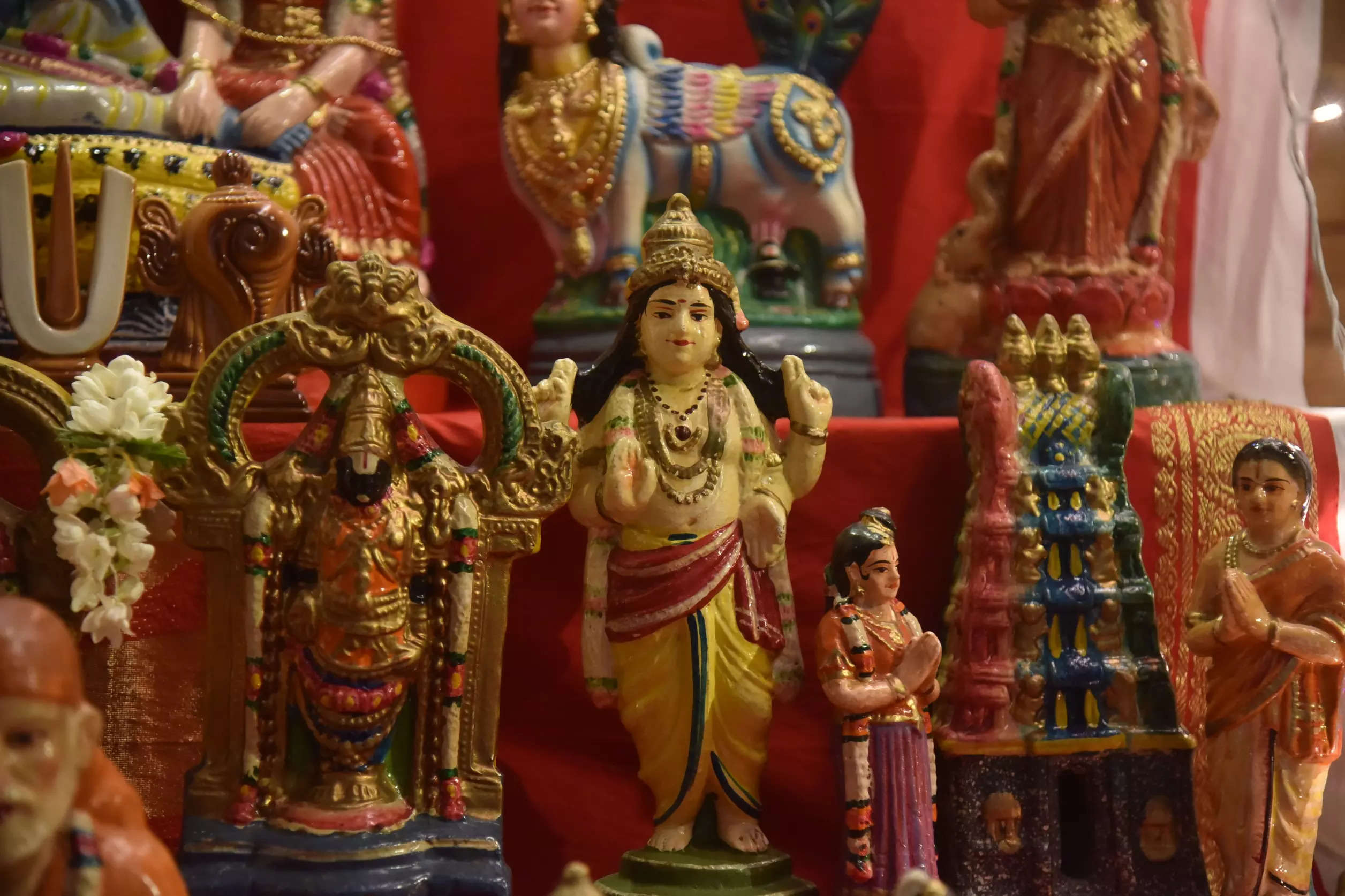
Themes range From Krishna to Harry Potter!
The Golu is a decorated display of dolls and figurines placed on a makeshift staircase. Traditionally, it was used to showcase characters from the puranas. But these days, people also take up current affairs, weddings, and events from daily life as themes for the Golu. Dr. Kamini Srikanth of Bengaluru, who has been organising Golus for more than 22 years, says she likes to change it up with a new theme every year.
“Putting up Golu during Dasara has been a tradition in my family for years. I have worked with themes like life in a forest and zoo, besides Krishna leela, that depicts various incidents from Krishna’s life, avatars of Goddess Lakshmi and others. This time, we are showcasing village people and their activities. You can find everything from children playing to local vendors at their shops in the Golu,” she says, adding that her display comprises over 400 dolls made from brass, wood, and clay.
Meanwhile, Boston-based IT professional Radhika Pragada, who was born and raised in Secunderabad, is putting up a Hogwarts-themed Bommala Koluvu for her son. “I remember my mom putting up Bommala Koluvu every year for Dasara. Now, I do the same for my eight-year-old son.
In India, koluvu is usually expected only from daughters. But I want my son to be interested and involved in the activity too. This time, we put up a traditional Koluvu made up of Kondapalli and clay dolls I collected over the years. We have two more themes – an Indian village that reflects the simple old times and another of Hogwarts. My son and I are massive Potterheads, and it was his idea to incorporate our love for Harry Potter into the Koluvu this year,” Radhika shares.
Takes time and effort
“Typically, a Golu display would take about three days to arrange. You need help as well,” says dancer Vani Ganapathy, who has been keeping up with the tradition for the past 25 years. Ask her how many dolls are typically featured in her Golu and she quips that there really isn’t a count.
“The idea is to keep adding more dolls every year to your existing collection,” she says.
As for the arrangement, Vani says that the dolls are placed on odd-numbered steps —t hree, five, seven, and so on. The steps are covered with a decorative cloth, and the dolls are then placed on them. While the number of steps could vary from one to eleven depending on the number of dolls available, many families choose to go with nine steps, each step representing the nine days of Navratri.
One of the main elements in a Golu is the figure of a couple — representing yin and yang. It shows that both the male and female are equally important,” she says.
All about tradition
The Golu is an occasion for women to socialise, share gifts, and put haldi and kumkum for each other. People visit each other’s homes to view and appreciate their collections, while exchanging greetings. On the ninth day of Navaratri, Saraswati Puja is done, and the following day, the dolls are carefully packed away.
Pre-stocking according to themes
John Bhaskar, retail manager at a 30-year-old shop that sells Golu dolls, says they get them pre-ordered according to demand. “These dolls speak of the stories that today’s generation don’t know. Golus is also a great way to keep these stories alive. While concepts like Dasavatara, Krishna Leela, and Gurukula Payirchi are popular, people come up with novel concepts like cricket and tennis nowadays. Customers begin contacting us with their themes in early June,” he says.
—With inputs from Neeshita Nyayapati





